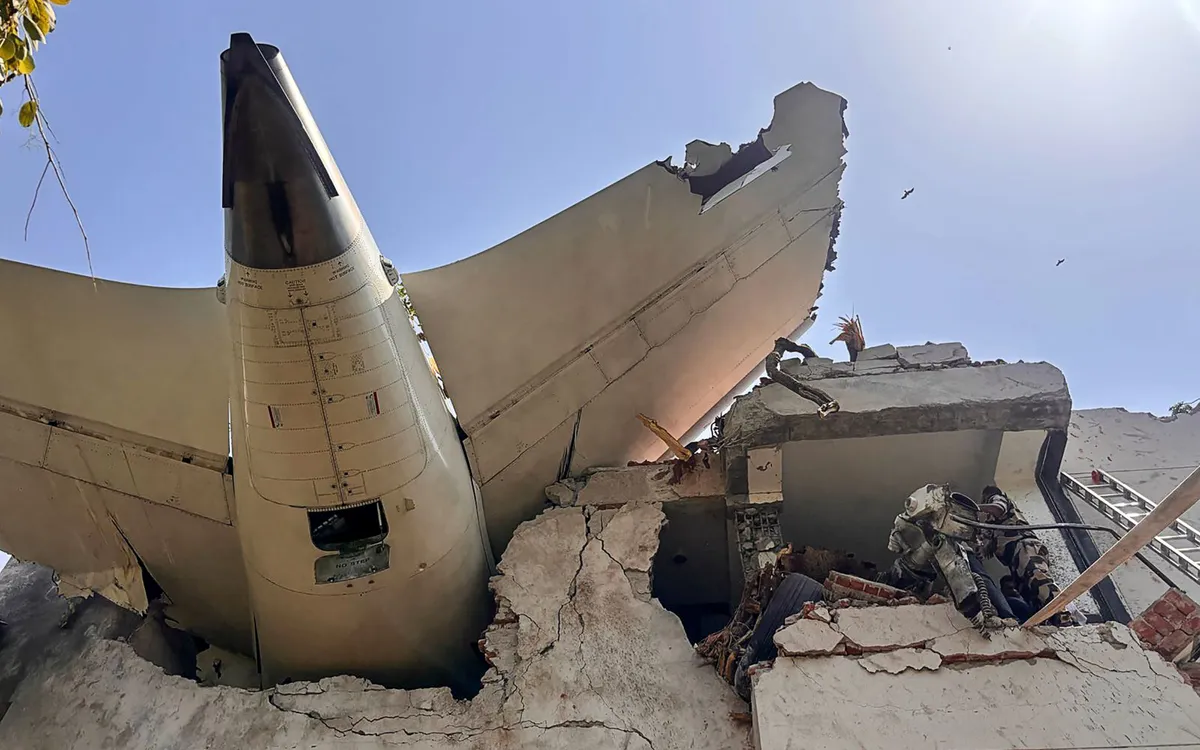Man Who Survived Air India Crash Jumps Out of Plane’s Emergency Exit—What He Did Next Shocked Everyone Onboard!
In a bizarre and shocking turn of events, a man who previously survived a deadly Air India plane crash stunned passengers and crew when he suddenly opened the emergency exit of another aircraft and jumped out minutes before takeoff. The incident, which occurred at Indira Gandhi International Airport in New Delhi, has raised serious questions about airline safety protocols and the psychological effects of surviving aviation disasters.
Witnesses and investigators have described the event as “unbelievable, terrifying, and emotionally intense”, with one flight attendant saying, “We thought we were about to witness another tragedy.”
Now, as authorities piece together the timeline of the incident, the nation is left asking: What drove him to do it—and what happened next?

The Survivor: A Man With a Tragic Past
The man at the center of this drama has been identified as Rohit Malhotra, 35, a Mumbai-based engineer who made headlines just two years ago as one of the sole survivors of Air India Flight 295, which crash-landed due to a catastrophic engine failure during heavy monsoon weather. That 2023 crash claimed the lives of 67 passengers and crew.
Rohit’s story had once inspired millions: a man who emerged from wreckage and flames, crawling to safety with broken ribs and a dislocated shoulder, only to later advocate for stricter aircraft safety protocols. His interviews aired on primetime news. He was even honored by local governments for his bravery in helping a mother and her infant escape the burning fuselage.
But behind the accolades and the public image, Rohit had apparently been suffering in silence.
A Sudden, Shocking Action
On the morning of June 16, 2025, Rohit boarded Air India Flight AI-180 bound for Bengaluru. According to witnesses, he appeared nervous and jittery from the start. Fellow passenger Priya Shah, seated one row behind him, noted:
“He kept checking the overhead compartment, gripping the seat armrest. At first I thought it was normal anxiety, but he looked like he was reliving something.”
The aircraft had just begun taxiing toward the runway when, according to the flight report, Rohit suddenly unfastened his seatbelt, ran toward the overwing exit, and pulled the lever—triggering the emergency slide.
Before the stunned crew could stop him, he leapt out of the aircraft, landing on the tarmac.
What He Did Next Stunned Everyone
Rather than flee or panic, Rohit began kneeling on the tarmac, arms spread wide, crying and reportedly praying aloud in Hindi.
Airport workers initially assumed he was injured or suicidal. Emergency crews rushed toward him, fearing the worst. But what they found shocked them.
“He was not hurt,” one emergency responder said. “He kept repeating, ‘I can’t die in the air again. I had to touch the earth.’”
As security escorted him away, Rohit reportedly remained calm, even serene.
“He told us, ‘You won’t understand unless you’ve been inside a metal coffin in the sky.’”
Immediate Response: Panic, Chaos, and Delays
Inside the plane, passengers were thrown into panic. Some feared a hijacking attempt, while others believed a technical failure had forced an evacuation.
The captain was forced to cancel the takeoff and return the aircraft to the terminal. Air India issued a statement shortly after:
“We confirm that a male passenger activated the emergency exit and exited the aircraft prior to takeoff. The individual is in custody and no injuries were reported. A full investigation is underway.”
All passengers were disembarked and rebooked on later flights. Several expressed concern over the ease with which someone could access the emergency exit before airborne status was reached.

The Psychological Toll of Survival
Psychiatrists and trauma experts are now pointing to Rohit’s case as a textbook example of untreated PTSD (Post-Traumatic Stress Disorder). Dr. Sameera Gupta, a trauma therapist who has worked with war veterans and crash survivors, weighed in:
“Survivors often suppress their trauma, especially when they’re praised as heroes. But in many cases, unresolved trauma can manifest suddenly and dramatically, as it appears to have here.”
She added that flight-related PTSD is often overlooked in India, despite the country’s growing aviation industry.
“There needs to be post-incident mental health support not only for survivors but also for flight crew and families.”
Legal Consequences Ahead
While many online are sympathetic toward Rohit’s condition, Air India is pursuing legal charges under civil aviation laws. Tampering with or deploying emergency equipment without cause is a serious offense, often resulting in heavy fines, blacklisting from airlines, and even jail time.
However, public opinion is divided. Some argue Rohit’s history should be taken into account and that the case should be handled with compassion, not punishment.
An online petition titled “Help Rohit Heal, Don’t Punish Him” has already gained over 25,000 signatures in less than 24 hours.

A Country Reflects on Aviation Trauma
This incident has sparked nationwide conversations about aviation trauma, mental health, and survivor’s guilt. News outlets are re-airing footage of the 2023 Air India crash, while talk shows debate whether enough is being done to support survivors of traumatic events.
One columnist wrote:
“We call them ‘miracle survivors’—then leave them alone with nightmares. What Rohit did was extreme. But maybe it’s a scream for help we’ve ignored for too long.”
What Happens Next for Rohit Malhotra?
Currently, Rohit is undergoing a 72-hour psychiatric evaluation at a medical facility in Delhi. His family has requested privacy but issued a short statement:
“Rohit is a loving son and a survivor. We ask for understanding and support during this difficult time.”
Meanwhile, Air India has launched a review of its pre-flight safety protocols, specifically regarding access to emergency exits during taxiing.

Final Thoughts: A Crisis and a Wake-Up Call
Rohit’s story is a reminder of something many forget: the scars of survival often run deeper than physical wounds. While the world saw a hero in Rohit Malhotra, he was still battling a war inside. His sudden decision to jump from an airplane wasn’t an act of defiance—it may have been a desperate cry to reconnect with something that felt safe: solid ground.
As the airline investigates, and the courts decide, perhaps the most important action is not punishment, but reflection. How many more Rohits are out there, flying with silent pain?
And more importantly—are we listening?







